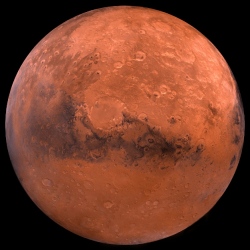
This year is shaping up as a bumper year in space with new missions ready to launch, deep space missions wrapping up, and commercial space going heavy. It’s a year when spacecraft ditch on comets, rendezvous with asteroids, lift off for Mars, and arrive at Jupiter. It’s also a year when rockets get bigger, space planes roll out, and winds get tracked.
To get the lowdown on the highlights, here’s a looks at where space exploration is taking us in 2016.
Juno
On July 4, NASA’s deep-space probe Juno will arrive at Jupiter. Launched in 2010, the unmanned orbiter has spent five years on its journey, including a flyby of Earth to slingshot the spacecraft towards Jupiter. Once it reaches its destination it will enter a highly elliptical orbit around the giant planet.
Built by Lockheed-Martin, Juno will use imagers, spectrometers, plasma, and energetic particle detectors, magnetometers, and gravity instruments to study the interior of Jupiter.
OSIRIS REx
Scheduled for launch in September, OSIRIS-REx is designed to rendezvous with the near-Earth asteroid Bennu in 2018. Bennu is one of only five B-type asteroids that is of suitable size and orbit for rendezvous and sample return. It’s also one of the most likely asteroids to hit Earth in the next few centuries, so taking a close look has an element of self-interest. Another point of interest is that it’s a carbonaceous asteroid that may provide insights into the origins of the Solar System as well as the source of water and organic molecules on Earth.
Once it reaches Bennu, OSIRIS-REx will spend a year examining the asteroid, including a detailed study of its chemistry, mineralogy, and topography. It will also compare telescope-based data with on-the-spot observations and make a precise determination of the asteroid’s orbit.
ExoMars
The first of two ESA/Roscosmos Mars probes lifts off some time after March 14 this year as the Exobiology on Mars (ExoMars) mission gets under way. ExoMars is a joint two-part mission being carried out by ESA and Russia’s Roscosmos. ESA will provide two spacecraft for the first mission in 2016, the Trace Gas Orbiter (TGO) and the Schiaparelli Entry, Descent, and landing demonstrator Module (EDM).
or the 2018 mission ESA will provide a carrier spacecraft and rover. Meanwhile, Roscosmos will build the 2018 mission’s rover descent module and surface platform as well as the launchers for both missions. Both agencies will supply instruments for exploration.
While ExoMars 2018 is exploring the surface, ExoMars 2016, which is made up of the Trace Gas Orbiter and the Schiaparelli module, will study the Martian atmosphere.
Cassini
This year, a space veteran’s career draws to a close. NASA’s Cassini orbiter will wind up its extended mission in anticipation of its controlled disposal into Saturn’s atmosphere on September 15, 2017. Launched in October 1997, the bus-sized spacecraft arrived at Saturn in 2004 after years of slingshotting around Venus, Earth, and Jupiter.
Aeolus
Later in 2016 we will see the launch of ESA’s Aeolus mission to study the world’s winds. Part of the Earth Explorers program, the Aeolus is designed to learn more about the Earth’s atmosphere and weather systems, monitor the weather in different part of the world, and build complex models of the environment in hopes of better weather forecasting.
Dream Chaser
Sierra Nevada Corporation’s (SNC) Dream Chaser may have lost out on the contract to ferry astronauts to the International Space Station (ISS), but the company says that it’s far from grounded. An unmanned version of the space plane is scheduled to lift off from the Cape Canaveral Air Force Station, Florida on November 1.
The unmanned variant of Dream Chaser is similar to the manned version in its basic configuration. Both are lifting bodies that are powered by a hybrid rocket engine burning hydroxyl-terminated polybutadiene (HTPB) and nitrous oxide, and both can be launched from atop an Atlas V rocket.
Rosetta
Having arrived at the comet in 2014, Rosetta has made a detailed study of 67P and acted as the mothership for the Philae lander. However, as Comet 67P recedes from the Sun, there will eventually be insufficient light available to charge Rosetta’s batteries. Before this happens, mission control in Darmstadt will order the spacecraft to make a controlled landing on the comet’s surface.
SpaceX Heavy
If things go according to schedule, the first flight of SpaceX’s SpacEx’s Heavy booster could take place in April or May. Previously known as the Falcon 9 Heavy, it is a variant of the Falcon 9 that made the first controlled, powered landing of a space rocket last month. The difference is that the Heavy consists of a Falcon 9 core with a pair of strap-on boosters based on the Falcon 9 booster. This will allow the rocket to carry payloads of 53 tonnes into low-Earth orbit, which is a significant advance on the Falcon 9’s 13 tonnes.
